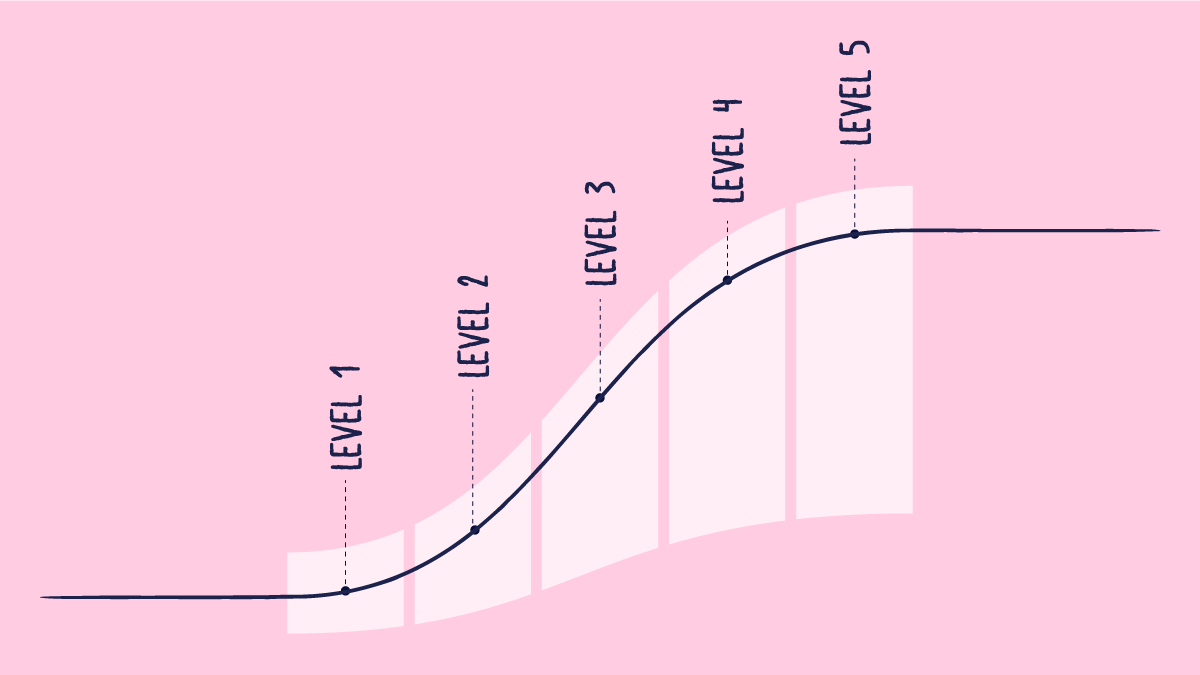
Quality in life sciences is more imperative than ever. Organizations today are under constant pressure to innovate and meet market demands while simultaneously improving efficiency, maintaining regulatory standards, and minimizing risk.
This means that each step needs to be as error-free as possible. And this is where Total Quality Management (TQM) steps in.
In this article, we dive into total quality management principles, the 4Ps and 3Cs of TQM, TQM vs QMS, and much more. The objective is to give you the full guide on how to implement TQM in your life sciences organization!
Key takeaways
Total Quality Management definition
Total Quality Management (TQM) is a structured, comprehensive, and principle-driven method of approaching quality that can be implemented at every level of an organization.
One of the main themes of TQM is to encourage continuous improvement, employee engagement, and customer satisfaction. When implemented effectively, total quality control delivers what it’s supposed to: a better quality product output.
Understanding Total Quality Management
Unlike other internationally recognized frameworks such as ISO 9001 or GMP, TQM is not defined by exact rules and regulations.
It is more of a mindset—one that focuses on individuals at all levels of an organization to actively contribute to improving products, processes, and outcomes.
TQM is built on a set of interrelated principles, with the primary goal of eliminating errors from the very beginning. By encouraging the identification and resolution of root causes before they become problems, TQM helps organizations build more resilient systems and reduce variability over time.
A strong focus on customer satisfaction, employee participation, and process-oriented management ensures that quality is continuously embedded into everyday work.
Rather than adding quality as a checkpoint at the end, TQM drives the system itself to evolve and deliver better outcomes continuously.
Ultimately, total quality management harbors an environment of commitment to ongoing refinement and learning. Each step of the process supports the others, forming a cohesive strategy that aligns people, processes, and goals.
Benefits of Total Quality Management
Before exploring how to implement TQM, it’s essential to understand the key benefits this methodology brings to life sciences organizations, such as:
- Moves beyond corrective systems: Traditional preventive and corrective action–based quality systems are no longer enough in fast-paced industries like pharmaceuticals and medical devices. TQM offers a more effective, integrated approach.
- Improves efficiency and quality: Organizations adopting TQM often see measurable gains in operational efficiency, product quality, and market performance.
- Streamlines workflows: By eliminating errors and improving collaboration, teams experience fewer delays and more predictable production cycles.
- Boosts employee morale: A culture of quality encourages positive work environments, recognition, and employee engagement.
- Promotes proactive improvement: TQM shifts organizations from reactive problem-solving to proactive process enhancement. Employees are empowered to identify issues early, raise concerns, and contribute solutions.
- Creates a culture of continuous progress: Quality becomes part of the organizational mindset, generating a positive feedback loop of learning and improvement.
- Strengthens customer trust: By prioritizing customer needs, companies deliver consistent, high-quality products and services—enhancing brand reputation and long-term relationships.
Recommended learning: Discover how to build a culture of quality with Total Quality Management.
The four levels of the Total Quality Management evolution
How did TQM evolve through the years? Most professionals and organizations have witnessed the evolution of TQM. It started with the inspection stage and evolved through inspection stages, quality control, and quality assurance into what today is modern TQM.
-Evolution.png?width=1560&height=3512&name=The-four-levels-of-the-Total-Quality-Management-(TQM)-Evolution.png)
Level 1. Inspection
This is the first and basic level of the TQM evolution. It includes measuring the characteristics of a product and its specifications.
Inspection focuses on the examination, measurement, testing, and assessment of the characteristics of a product, service, or activity, and compares them with the appropriate standards to assess its conformity.
Level 2. Quality Control
Quality control focuses on the quality of the products.
Level 3. Quality Assurance
Quality assurance, also known as QA, focuses primarily on products and processes. QA activities include creating and maintaining procedures to ensure that the product is manufactured as described in the procedures.
Level 4. Total Quality Management
TQM focuses on the entire organization as one and promotes the organization to use four main stages in the evolution of TQM.
The 8 Total Quality Management principles
The highest quality level is composed of eight elements. Usually, organizations define these elements as a part of their principles or core values. The implementation of these total quality management principles has been shaped by the work of renowned quality leaders such as P. B. Crosby, W. E. Deming, A.V. Feigenbaum, K. Ishikawa, and J. M. Juran.
So, what are the 8 total quality management principles? Let’s have a closer look!

I. Customer-focused
The first of the total quality management principles emphasizes that the customer ultimately defines the level of product quality. Hence, organizations should listen to and define current and future customer needs and strive to exceed these expectations. If customers are satisfied, what you did to improve your product quality was very well worth it!
II. Total employee involvement
A key total quality management principle is ensuring that all employees work toward common objectives. Employees at all levels are the essence of the organization, and their full involvement can magnify their abilities for the organization’s benefit to improve processes, products, services, and company culture.
III. Process-centered
A process consists of a set of activities that takes inputs and turns them into outputs. Usually, TQM focuses on the process in order to improve it. Process steps are carried out according to predefined instructions, which are controlled and monitored periodically so that any unexpected defects can be easily found. With the process-centered approach of TQM, expected results are achieved more efficiently.
IV. Integrated systems
Every organization has a unique work culture, and achieving excellence in its products and services is virtually impossible without fostering a good quality culture. The focus of TQM is to connect different functions into an integrated system. This system combines business improvement elements to continually improve and exceed expectations.
V. Strategic and systematic approach
With this approach, an organization's vision, mission, and goals become achievable. Strategic planning, or strategic management, incorporates the formulation of a strategic plan that integrates quality as a core component.
VI. Continuous improvement
As part of the continuous improvement process, an organization must employ both analytical techniques and creative thinking to enhance its competitiveness and performance in meeting expectations.
VII. Fact-based decision making
The performance of an organization can be measured using data on performance measures. As a result of using TQM, an organization must constantly collect and analyze data to improve decision-making accuracy, reach consensus, and make predictions based on historical data.
VIII. Communication
As an organization evolves through change, communication plays a crucial role in maintaining morale and encouraging employees. Communications can focus on strategies, methods, and timeliness.
One effective way to frame Total Quality Management principles is through the 4Ps and 3Cs of TQM, which combine hard management elements with soft cultural outcomes.
By applying this model, organizations can ensure that both structure and culture are working together to support quality. Let’s dive into this model in the following section!
The 4Ps and 3Cs of TQM – a Total Quality Management model
The ‘4Ps and 3Cs’ model is based on a comprehensive and scientific approach to TQM. The 4Ps and 3Cs of TQM provide a simple framework for excellent performance, covering all angles and aspects of an organization and its operations.
The four Ps
The four Ps provide the “hard management necessities.” The four Ps of Planning, Processes, and People are the keys to delivering quality products and services to the customers and improving overall Performance:
1. Planning
Planning includes the development and deployment of policies and strategies, setting up appropriate partnerships and resources, and designing with quality in mind.
2. Processes
Processes include understanding, management, design/redesign, quality management systems, and continuous improvement.
3. People
People include managing human resources, culture change, teamwork, communications, innovation, and learning.
4. Performance
Performance includes establishing a performance measure framework – a ‘balanced scorecard’ for the organization, carrying out self-assessment, audits, reviews, and benchmarking.
.png?width=1560&height=1864&name=The-Four-Ps-and-Three-Cs-framework-for-Total-Quality-Management-(TQM).png)
The three Cs
The three Cs – culture, communication, and commitment – provide “soft outcomes” for the TQM model. Without them, the 4Ps and 3Cs of TQM cannot function as an integrated model for sustainable improvement.
Do not underestimate the importance of the three Cs!
The TQM model is complete once “soft outcomes” are integrated into the four Ps framework, so that the model can successfully move organizations forward:
1. Culture
Create values and ethics to support the development of a total quality culture and ensure that creative and learning activities are developed and implemented.
2. Communication
Communicate the vision, mission, policies, and strategies. Consistently promote communication and collaboration.
3. Commitment
Participate personally and actively in the quality and improvement activities of your organization.
Implementing TQM in life sciences
If you’re wondering how to implement TQM in highly regulated industries like pharmaceuticals and medical devices, the answer lies in aligning TQM with good manufacturing practices while promoting a proactive, cross-functional culture.
Here we’re talking about the kind of culture that encourages collaboration between departments such as Quality Assurance, Research and Development, Production, and even supplier networks.
Going beyond the theory and the total quality management principles that we’ve already covered, key enablers of effective TQM implementation include:
- Process focus: Upgrading QMS processes with digital tools, real-time monitoring, and data-driven insights to reduce errors before they occur.
- Leadership methodology: Leadership must embrace fact-based decision-making and accountability while embedding continuous improvement into strategic planning.
- Cross-functional collaboration: Breaking silos between departments ensures that quality is not isolated but woven into every stage of product development and manufacturing.
- Supplier quality management: Partnering with suppliers to ensure raw material quality, robust processes, and compliance safeguards downstream results.
- Customer feedback integration: Moving beyond passive tracking of complaints, organizations actively analyze feedback to enhance product usability, reliability, and safety.
Digital tools such as Scilife’s QMS software support this journey by enabling continuous feedback loops, anomaly detection, and corrective action in real time. This creates a learning system where quality improvements are sustained and scaled across the entire organization.

A practical example of how TQM can save you money and stress
Companies worldwide are implementing TQM and are inspired by its very real results. So if you’re eager to learn how to implement TQM in your organization, continue reading..
Take the case of a mid-sized pharmaceutical company. One common risk is faulty packaging—often supplied by external vendors. While a standard QMS might catch some issues, it is still possible for defects to slip past audits.
If undetected, faulty packages could make their way into international shipments, leading to customer complaints, product returns, and significant revenue losses.
This example illustrates how to implement TQM in practice, where the emphasis is on proactive, systematic audits and root cause prevention. This approach greatly increases the likelihood of detecting packaging problems early, before products leave the facility, saving both money and reputation.
TQM vs QMS: Complementary, not competing
A common misconception in the TQM vs QMS debate is that Total Quality Management competes with structured Quality Management Systems.
In reality, TQM vs QMS should not be seen as a competition but as a partnership, since the two approaches serve different yet complementary purposes.
A QMS provides a formalized structure for managing quality-related processes. It includes documented procedures, responsibilities, and audit mechanisms necessary to demonstrate compliance with external standards.
TQM, by contrast, is about cultivating a mindset and a culture that supports and enhances the QMS. In the context of TQM vs QMS, TQM promotes innovation, fosters employee engagement, and drives continuous improvement in ways that structured systems alone cannot achieve.
When both are aligned, the result of TQM vs QMS is a mature, adaptable quality ecosystem—one that can withstand regulatory pressure, support innovation, and drive sustainable growth.
Conclusion
Total Quality Management offers life sciences organizations a powerful way to elevate their performance and embed quality into their culture. It encourages a shift from reactive compliance to proactive excellence, where every team member contributes to driving improvement.
At Scilife, we believe that quality should be embedded—not imposed. Our eQMS is designed to support organizations with tools that promote transparency, traceability, and collaboration. Whether you’re just beginning your quality journey or seeking to advance your maturity, Scilife can help.
FAQs - Commonly Asked Questions
Is TQM the same as ISO 9001?
No. ISO 9001 is a standardized quality management system with specific requirements, whereas TQM is a broader methodology aimed at cultural and operational excellence. Many organizations apply TQM principles alongside ISO 9001 standards to enhance their effectiveness.
How does TQM differ from Six Sigma?
Six Sigma is a data-driven methodology focused on reducing variation and defects. TQM, on the other hand, addresses broader organizational culture and employee involvement. The two can work well together, especially when structured Six Sigma projects are supported by a TQM-oriented environment.
What is the role of QA in TQM?
Quality Assurance remains vital within TQM, but shifts from being the sole guardian of quality to being a facilitator of continuous improvement. Under TQM, QA teams work collaboratively with other departments to proactively identify and address quality issues.
Is continuous improvement a part of TQM?
Yes. Continuous improvement is one of the central pillars of TQM. It ensures that gains are not temporary and that organizations are always seeking to improve their processes, products, and outcomes.








